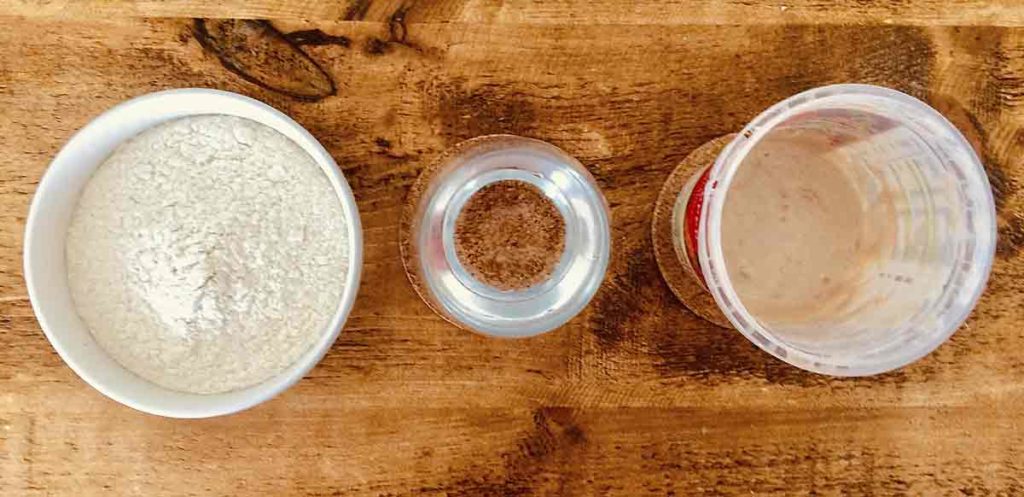With yeast hard to come by and traipsing round to look for it ill-advised, Abby Jones explains the mysteries of sourdough
What is sourdough?
Since it’s rise to “trendy” status, somewhere around 2012, sourdough has been a fixture of every cool-caf in the city. But what is the difference between sourdough and regular bread
Essentially, you make bread with three things: Flour, water and yeast. Sourdough is made with a live yeast (called a starter), whereas other breads are made with a dried yeast (that you can buy in a sachet). Now we are lessening the trips to the shop, here is a quick intro to making your very own starter, so that you can make bread without buying dried yeast. It’s fun, super tasty, and helps understand the science behind bread baking bread…
 Making your starter
Making your starter
Get a small, airtight container. I use a plastic soup tub or a jam jar.
Get some flour. You can use strong white flour or bread flour. If you have any, you can put in some spelt or rye flour too.
Into the clean container, add 100g of flour and 120ml of water.
Mix this with a fork, seal the container and leave it for 24 hours in your kitchen.
Sourdough starter is massively affected by temperature. If you put it in the fridge, it will stay alive but won’t be so active, if you keep it somewhere very warm, it will get very active.
For the next week, you will need to “feed” your starter daily. Every time you feed your starter, you discard half of it and add 100g of flour and 120ml of water, as above. It seems sad to throw it away, but this helps the starter to get active. Once you start baking with it, you won’t discard this, but instead, use it as yeast in your bread.
 Continue your daily ‘feeding’ of the starter for about a week, or until you see it becoming bubbly and smelling a bit sour – this means it’s alive and ready to use.
Continue your daily ‘feeding’ of the starter for about a week, or until you see it becoming bubbly and smelling a bit sour – this means it’s alive and ready to use.
Top tip
This is a messy game, so avoid bacteria on the outside of your container, by rinsing after each feed, with warm water, to keep it nice and clean.
Help …
I have had many failed attempts at this. My only advice for those starting out, is try not to follow recipes to a dot, but just make changes if it doesn’t go to plan, to see what it needs. The reason for your starter may not becoming active, is due to either:
- Too much water (it shouldn’t be too runny, ever)
- Too much flour (it shouldn’t feel like mashed potato)
- Temperature – it’s too cold, move it somewhere warmer
- Not being fed enough (like us, starters get sad if they don’t get fed enough)
- Being fed too much (often it just needs some time to get into its groove) mine often goes very active when I leave it alone for a few days.
Good luck!














